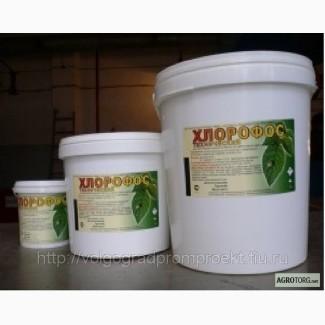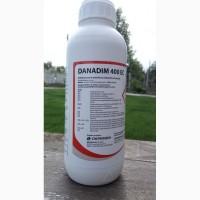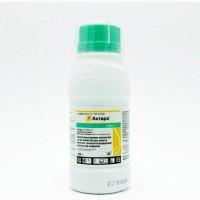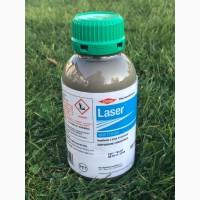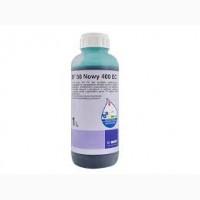For sale / buy
Chlorofos (technical), Cherkasy region.
Price570 UAH.
Region:all of Ukraine,
Cherkasy Oblast.
(Cherkassy)
Updated:
Chlorophos
Chlorophos (dilox, dipterex, ricifon, tuvone, trichlorofon) is an insecticide, a preparation for combating the skin gadflycattle, effective against flies, bugs, pests of agricultural plants, soluble in water, low-toxicity for warm-blooded animals.(//tractor-service.com)
White crystalline powder, and the technical product is a viscous, partially crystallized mass. It dissolves well in water and in most organic solvents, quickly decomposes in an alkaline environment and in the world. In an acidic environment, there are more racks. The duration of action on insects is up to 10 days. Moderately toxic for warm-blooded animals. It is toxic to bees, so they must be isolated for the treatment period and the following days. It has an irritating effect on the skin. The ability to accumulate in the body is weakly expressed. A broad-spectrum insecticide. It is produced in the form of 80% microgranulated c. p. The basis of the active substance is neutral or well-crystallized chlorophos. It is recommended for spraying during the period ofpotato vegetation against the Colorado potato beetle, potato beetle and moth; apple trees and pears - against fruit rot, weevils, moths, bugs, sawflies, apple glassworm, caustic woodworm at the rate of 20-30 g per 10 liters of water; plums and cherries - against weevils, leafhoppers, sawflies, cherry fly, fruit borer and thrips; grapevine - against leafhoppers and leafhoppers - 15-20 g per 10 liters of water. Three-fold processing is allowed, and grapes - only two-fold processing. It breaks down relatively quickly in plant tissues. With high humidity, it can cause burns of leaves and shoots, mainly young ones.
Properties. Chemically pure white crystalline powder; soluble in water (12%), benzene, chloroform, ether. Technical chlorophos - a white crystalline substance with a yellowish cloud, with a sharp specific smell (contains 82-87% of DHA); soluble in water (16%) and organic solvents. Release form. Chlorophos is produced in the form of 97% and 80% technical preparation, 80% and 50% wettable powders, and 5-7% dust. Store with caution (list B), in a well-sealed container.
Action and application. Chlorophos is an effective contact insecticide. It blocks cholinesterase, which is the basis of its insecticidal action. It is easily absorbed from the intestines, as well as through the skin and mucous membranes. It is used to fight against pasture and other ticks, flies, mosquitoes, midges, lice, bedbugs, fleas, cockroaches, hypodermic gizzard larvae and other insects. Apply chlorophos by watering, spraying and rubbing into the skin of animals in the form of 1-3% solutions. For disinfection of premises use 0 5-1% solution at the rate of 1 g of the drug per 1 m2. Places where flies breed are sprinkled with 5 /o or 10 l of dust or watered with a 1% solution on mineral oil. In addition, chlorophos is used for a number of helminth infections (ostertagiosis, hemonchosis, trichostrongylosis of sheep); 60 mg per 1 kg of animal weight are administered orally. In cattle with bunostomosis, hemonchosis and trichocephalosis, 20-30 mg per 1 kg of the animal's weight is injected under the skin. For hemenolepidosis and drepanidoteniosis, ducks are given a mixture of chlorophos and phenothiazine (8 mg of chlorophos and 30 mg of phenothiazine per head). Slaughter of animals treated with chlorophos is allowed 3 weeks after processing.
Chlorophos (dilox, dipterex, ricifon, tuvone, trichlorofon) is an insecticide, a preparation for combating the skin gadflycattle, effective against flies, bugs, pests of agricultural plants, soluble in water, low-toxicity for warm-blooded animals.(//tractor-service.com)
White crystalline powder, and the technical product is a viscous, partially crystallized mass. It dissolves well in water and in most organic solvents, quickly decomposes in an alkaline environment and in the world. In an acidic environment, there are more racks. The duration of action on insects is up to 10 days. Moderately toxic for warm-blooded animals. It is toxic to bees, so they must be isolated for the treatment period and the following days. It has an irritating effect on the skin. The ability to accumulate in the body is weakly expressed. A broad-spectrum insecticide. It is produced in the form of 80% microgranulated c. p. The basis of the active substance is neutral or well-crystallized chlorophos. It is recommended for spraying during the period ofpotato vegetation against the Colorado potato beetle, potato beetle and moth; apple trees and pears - against fruit rot, weevils, moths, bugs, sawflies, apple glassworm, caustic woodworm at the rate of 20-30 g per 10 liters of water; plums and cherries - against weevils, leafhoppers, sawflies, cherry fly, fruit borer and thrips; grapevine - against leafhoppers and leafhoppers - 15-20 g per 10 liters of water. Three-fold processing is allowed, and grapes - only two-fold processing. It breaks down relatively quickly in plant tissues. With high humidity, it can cause burns of leaves and shoots, mainly young ones.
Properties. Chemically pure white crystalline powder; soluble in water (12%), benzene, chloroform, ether. Technical chlorophos - a white crystalline substance with a yellowish cloud, with a sharp specific smell (contains 82-87% of DHA); soluble in water (16%) and organic solvents. Release form. Chlorophos is produced in the form of 97% and 80% technical preparation, 80% and 50% wettable powders, and 5-7% dust. Store with caution (list B), in a well-sealed container.
Action and application. Chlorophos is an effective contact insecticide. It blocks cholinesterase, which is the basis of its insecticidal action. It is easily absorbed from the intestines, as well as through the skin and mucous membranes. It is used to fight against pasture and other ticks, flies, mosquitoes, midges, lice, bedbugs, fleas, cockroaches, hypodermic gizzard larvae and other insects. Apply chlorophos by watering, spraying and rubbing into the skin of animals in the form of 1-3% solutions. For disinfection of premises use 0 5-1% solution at the rate of 1 g of the drug per 1 m2. Places where flies breed are sprinkled with 5 /o or 10 l of dust or watered with a 1% solution on mineral oil. In addition, chlorophos is used for a number of helminth infections (ostertagiosis, hemonchosis, trichostrongylosis of sheep); 60 mg per 1 kg of animal weight are administered orally. In cattle with bunostomosis, hemonchosis and trichocephalosis, 20-30 mg per 1 kg of the animal's weight is injected under the skin. For hemenolepidosis and drepanidoteniosis, ducks are given a mixture of chlorophos and phenothiazine (8 mg of chlorophos and 30 mg of phenothiazine per head). Slaughter of animals treated with chlorophos is allowed 3 weeks after processing.
|
Author, contacts | |
Shytokha СС SPD / | ||165відгуки, інфо. / estimate of activity | |
|
Phone:
+380xxxxxx
show
| |
All user announcements ~2 | |
Ad ID: #1088907
(added by a registered user, registration date: 14-05-2019)
Added / Updated: 02-10-2024 22:37 (current, until: 09-02-2025)
Permanent Ad Address:
Impressions / views for today: ?, total: ?
